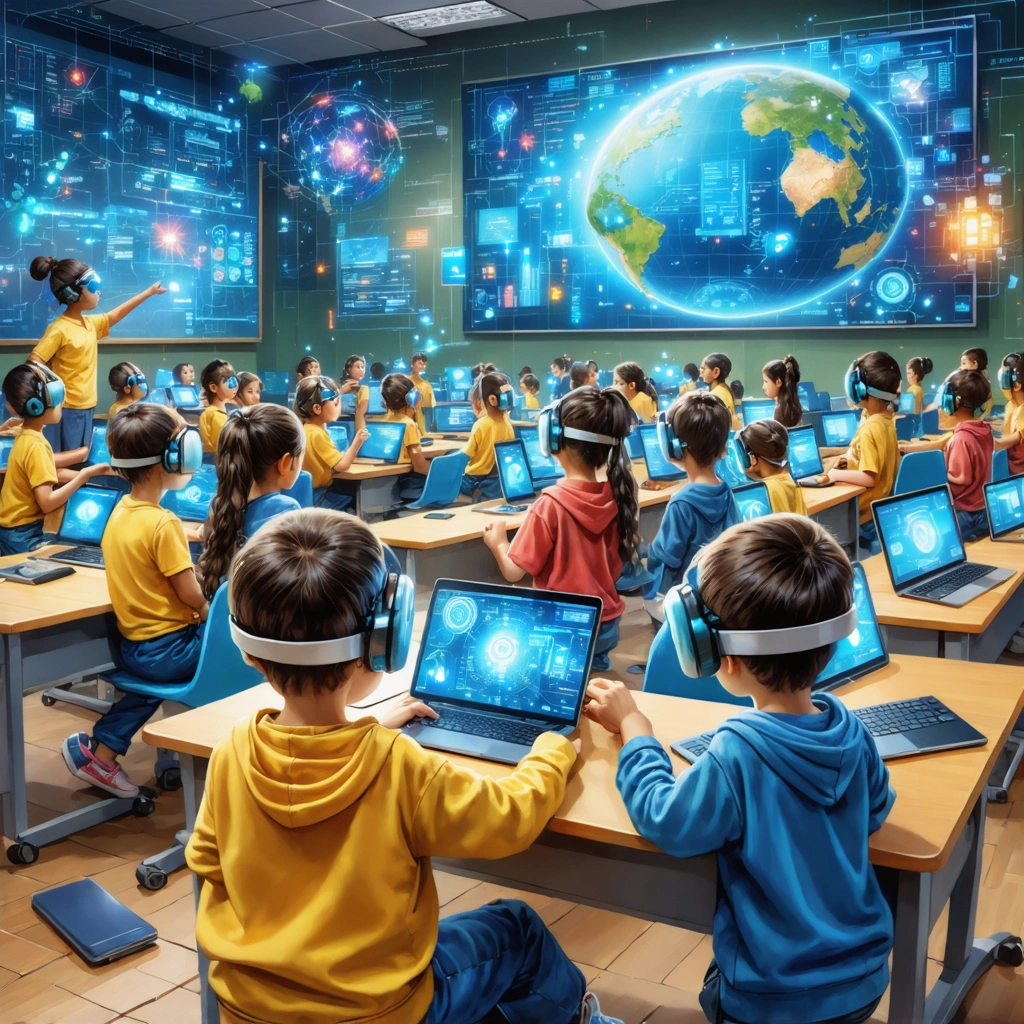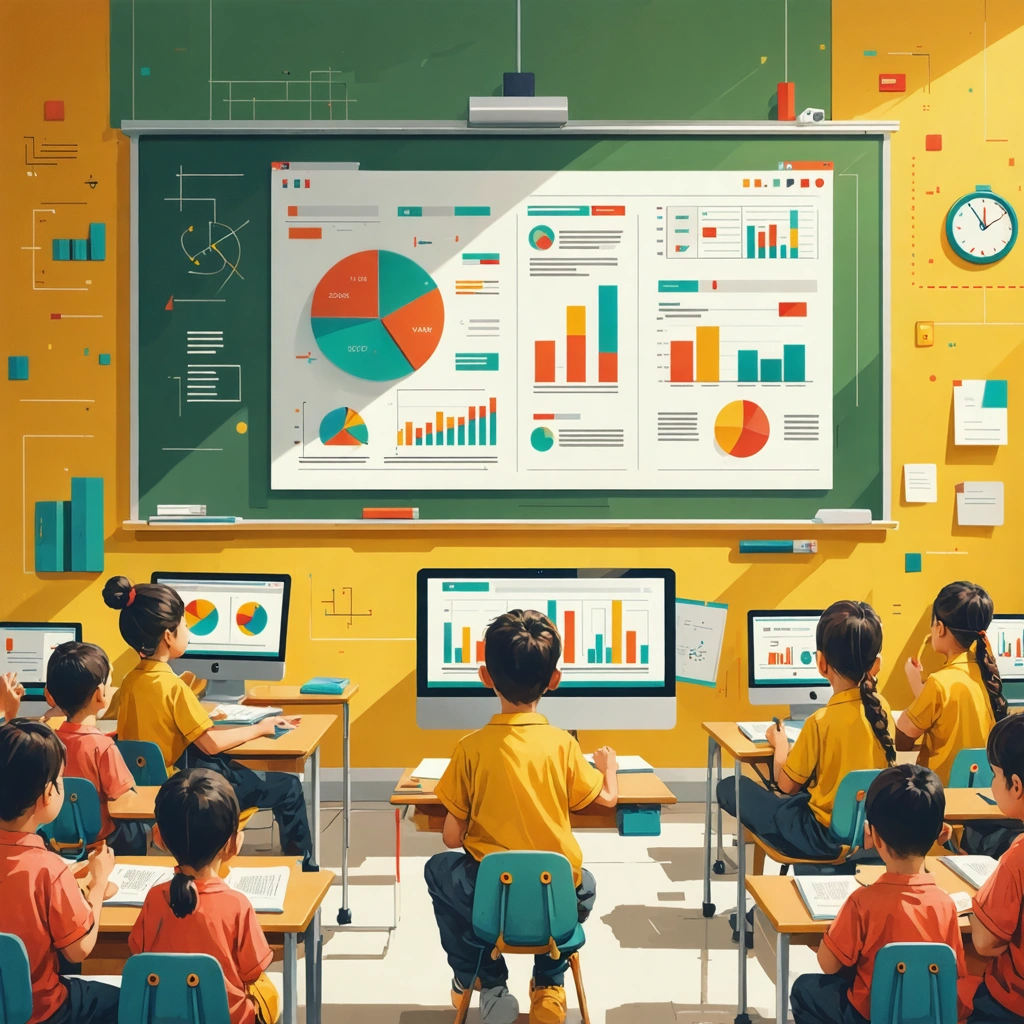
Unlocking the Future: Why Traditional Education Alone Isn’t Enough Anymore
Imagine a classroom where dusty chalkboards and heavy textbooks have been replaced by sleek tablets and interactive screens. Now, pause for a moment and ask yourself: Computer Kise Kahate Hain? In other words, what exactly is a computer? For many Indians, especially those venturing into the digital age, this question is no longer academic but a gateway to understanding how education is evolving. Computers have become the backbone of modern learning, and their role extends far beyond mere typing or browsing.
But it’s not just about knowing what a computer is. The digital world is vast and complex. Just as students need to grasp the basics of “Computer Kise Kahate Hain,” they must also comprehend “Software Kya Hai” — what software is and how it powers everything from educational apps to virtual classrooms. Without this understanding, the true potential of technology in education remains untapped.
India’s education system has long been admired for its depth and rigor, but it has also faced criticism for being rigid and slow to adapt. The gap between traditional teaching methods and the rapidly changing job market is widening every day. This disconnect leaves students ill-prepared for careers in fields like digital marketing, where knowing Digital Marketing Kya Hota Hai — or what digital marketing actually is — can be a game-changer.
The Turning Point: How Technology Is Shaping Education in 2025
Here’s where things get exciting. The year 2025 is not just another year on the calendar; it marks a significant shift in how India approaches education. Technology isn’t just a tool anymore — it’s an integral part of the learning ecosystem. Schools and colleges are no longer confined to physical spaces. With the rise of online platforms, AI-driven personalized learning, and immersive virtual reality experiences, students can access knowledge anytime, anywhere.
Consider this: India is home to over 1.4 billion people, with a young population eager to embrace new opportunities. Yet, many still struggle with access to quality education, especially in rural and underserved areas. Technology is bridging this divide by offering affordable, scalable solutions. For instance, understanding “Computer Kise Kahate Hain” isn’t just a classroom lesson anymore — it’s a foundation for digital literacy programs reaching remote villages.
Similarly, comprehending “Software Kya Hai” takes on new significance when students create their own apps or participate in coding bootcamps. This hands-on exposure transforms learners into creators, not just consumers. And when it comes to “Digital Marketing Kya Hota Hai,” the curriculum is evolving to include real-world skills that connect students to the booming digital economy.
What You Can Expect From This Article
- An insightful exploration of how educational technology is revolutionizing classrooms across India.
- A breakdown of key concepts like computers, software, and digital marketing, showing why they matter for education.
- Real examples of innovative initiatives and government policies accelerating this transformation.
- Practical insights for educators, students, and parents on navigating the new digital learning landscape.
Whether you’re a student curious about how understanding “Computer Kise Kahate Hain” can unlock new career paths, a teacher eager to incorporate “Software Kya Hai” into your lessons, or a parent wondering “Digital Marketing Kya Hota Hai” means for your child’s future — this article is your roadmap to India’s educational revolution.
So buckle up! The journey into the world of educational technology is just beginning, and the possibilities are as exciting as they are transformative. Ready to dive in?

Educational Technology in India: Transforming Education by 2025
How is technology reshaping the education landscape in India by 2025?
India is witnessing a remarkable transformation in its education sector driven by rapid technological advancements. By 2025, educational technology (EdTech) is expected to deeply integrate into classrooms, homes, and learning centers, making education more accessible, personalized, and effective.
Several factors contribute to this transformation:
- Increased Internet Penetration: With over 900 million internet users projected by 2025, digital learning platforms can reach remote and underserved communities.
- Affordable Smartphones and Devices: The proliferation of low-cost smartphones enables students from various economic backgrounds to access educational content anytime, anywhere.
- Government Initiatives: Programs like Digital India and SWAYAM promote online learning and digital literacy, accelerating EdTech adoption.
- Innovative Learning Models: Blended learning, flipped classrooms, and AI-driven personalized learning are becoming mainstream.
For example, platforms like Byju’s and Unacademy have revolutionized exam preparation by combining interactive video lessons with real-time quizzes, making learning engaging and data-driven.
What does the term Computer Kise Kahate Hain mean, and why is understanding this important in modern education?
Computer Kise Kahate Hain translates to "What is a computer?" in Hindi, a foundational question in digital literacy. Understanding what a computer is forms the basis for comprehending how technology can enhance education.
A computer is an electronic device that processes data according to instructions (software) to perform tasks ranging from simple calculations to complex simulations. In the context of education, computers facilitate:
- Access to vast digital resources, including e-books, videos, and interactive tutorials.
- Use of educational software that adapts to individual learning paces.
- Virtual classrooms and digital collaboration, breaking geographical barriers.
By 2025, computer literacy will be an essential skill for students across India, enabling them to thrive in a digital-first educational environment.
What is Software Kya Hai and how does software drive educational transformation?
Software Kya Hai means "What is software?" in Hindi. Software is a collection of programs and data that instructs a computer on how to perform specific tasks. In education, software is the backbone of all digital learning tools.
Educational software can be categorized as:
- Learning Management Systems (LMS): Platforms like Moodle or Google Classroom that organize courses, assignments, and communication between teachers and students.
- Interactive Educational Applications: Apps offering gamified lessons, quizzes, and simulations to engage learners.
- Assessment and Analytics Software: Tools that track student progress and provide insights for personalized teaching.
For instance, AI-powered tutoring software can identify a student’s weaknesses and customize lessons accordingly, making education more effective and inclusive.
How does Digital Marketing Kya Hota Hai relate to educational technology in India?
Digital Marketing Kya Hota Hai translates to "What is digital marketing?" Understanding digital marketing is crucial for EdTech companies and educators to promote learning platforms and resources effectively.
Digital marketing involves using online channels such as social media, search engines, email, and content marketing to reach and engage audiences. In India’s EdTech sector, digital marketing plays several key roles:
- Increasing Awareness: Helps educational institutions and startups reach students and parents nationwide.
- Driving Enrollment: Targeted campaigns can attract learners to specific courses or platforms.
- Building Community: Engaging content fosters user interaction and retention, essential for long-term success.
For example, Byju’s uses digital marketing strategies like influencer collaborations and targeted ads to grow its massive user base.
What challenges does India face in implementing educational technology, and how can they be overcome?
Despite its potential, EdTech adoption in India encounters several hurdles:
- Digital Divide: Unequal access to devices and internet connectivity limits inclusivity.
- Teacher Training: Many educators lack the skills to effectively use technology in classrooms.
- Content Localization: Need for education content in regional languages and culturally relevant formats.
- Data Privacy and Security: Protecting student data as digital platforms proliferate.
Addressing these challenges requires a multi-pronged approach:
- Government investments in infrastructure and affordable internet.
- Comprehensive teacher training programs focused on digital pedagogy.
- Development of multilingual and accessible content by EdTech firms.
- Robust data protection policies and transparent practices.
What is the future outlook for educational technology in India beyond 2025?
The future of educational technology in India looks promising, with innovations like artificial intelligence, virtual reality (VR), and blockchain expected to further revolutionize learning.
- AI and Machine Learning: Deeper personalization of education based on learner behavior and preferences.
- Virtual and Augmented Reality: Immersive learning experiences for complex subjects like science and history.
- Blockchain: Secure and verifiable digital certificates and credentials.
- Collaborative Platforms: Enhanced global connectivity enabling cross-cultural exchanges and project-based learning.
As these technologies mature, they will help bridge educational gaps, democratize knowledge, and prepare Indian students for the challenges of the 21st century.
